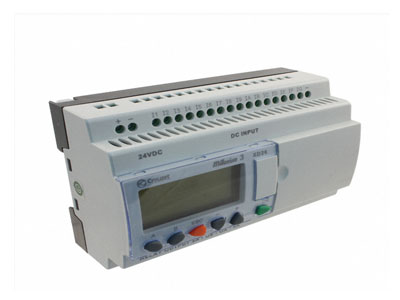What Is Sinking In PLC?
Key Takeaway
In PLCs, sinking refers to a wiring configuration where the current flows from the load to the PLC’s input or output module. In a sinking setup, the PLC input receives current from the positive terminal of the power supply, through the load, and then to the ground or negative terminal of the PLC. This is common in DC circuits and is often used to interface with various sensors and devices. Understanding sinking is essential for correctly wiring and configuring PLC systems to ensure proper operation and avoid damage to components.
Definition and Working of Sinking Inputs/Outputs
Sinking inputs and outputs function by providing a path to ground for current to flow through the load connected to them. In the case of sinking inputs, they detect the presence of a voltage signal when the circuit is completed by an external device, such as a sensor or switch. Similarly, sinking outputs energize connected devices by completing the circuit to ground, allowing current to flow through them.

Difference Between Sinking and Sourcing
The fundamental disparity between sinking and sourcing configurations in industrial automation lies in the path of electrical current. In sinking setups, current flows from the connected load, such as sensors or switches, through the PLC’s input or output module and eventually to the common ground within the PLC itself. This arrangement ensures that the circuit is completed through the PLC’s internal ground connection.
Conversely, sourcing configurations entail the current originating from the power source, typically within the PLC, which then flows through the connected device before returning to the PLC’s input or output module. Unlike sinking setups, where the current path includes the PLC’s ground, sourcing setups do not require the PLC’s ground to complete the circuit.
Understanding this distinction is pivotal for engineers and technicians involved in PLC programming and wiring, as it dictates how devices should be connected and how current flows within the system. Whether employing sinking or sourcing configurations depends on various factors, including the type of devices being used, the specific requirements of the application, and the design of the PLC system itself.
You May Like to Read
Applications of Sinking I/Os in Automation
Sinking inputs and outputs serve as indispensable components in various automation applications, particularly those requiring a common ground reference for external devices. Their versatility makes them suitable for a myriad of scenarios where precise monitoring and control are paramount.
In input circuits, sinking configurations are commonly employed to detect the status of switches, sensors, or proximity sensors. These inputs are vital for gathering data about the environment or equipment conditions, enabling the PLC to make informed decisions based on real-time information.
On the output side, sinking configurations are instrumental in controlling the operation of critical components such as solenoids, relays, or indicator lights. By modulating the output signals, the PLC can effectively manage the activation or deactivation of these devices, ensuring precise control over various aspects of the automated system.
Whether in manufacturing plants, automotive assembly lines, or energy management systems, sinking inputs and outputs play a pivotal role in enhancing operational efficiency, reliability, and safety. Their widespread adoption underscores their significance in modern industrial automation.
Wiring and Configuration of Sinking I/Os
When it comes to wiring sinking inputs and outputs in PLC systems, precision and attention to detail are paramount. Properly connecting external devices to the PLC ensures seamless communication and accurate data exchange within the automation network. Typically, this involves adhering to a straightforward wiring scheme: connecting the positive terminal of the external device to the input or output module of the PLC and linking the negative terminal to the common ground.
This wiring configuration establishes a clear pathway for electrical signals, facilitating efficient transmission between the PLC and connected devices. Moreover, configuring the PLC software to align with the wiring setup is equally crucial. By ensuring that software settings reflect the physical connections, engineers can optimize system performance and prevent potential errors or malfunctions.
Effective wiring and configuration not only guarantee smooth operation but also contribute to the overall reliability and longevity of the automation system. By adhering to best practices in wiring and configuration, engineers can harness the full potential of sinking inputs and outputs, thereby maximizing the efficiency and effectiveness of industrial processes.
Troubleshooting Sinking Input/Output Issues
When troubleshooting sinking input/output (I/O) issues in PLC systems, engineers must conduct a thorough examination to pinpoint potential causes of malfunction. This process involves a step-by-step approach, starting with inspecting wiring connections to identify any loose or damaged wires that may disrupt signal transmission. Engineers then proceed to check for continuity along the wiring path to ensure uninterrupted electrical flow.
Simultaneously, verifying the PLC configuration settings is essential, as incorrect settings can lead to misinterpretation of input signals or failure to activate output devices. Utilizing diagnostic tools like multimeters allows engineers to measure voltage levels and detect any anomalies that may indicate underlying issues.
In addition, leveraging PLC programming software enables engineers to access and modify configuration parameters, rectifying any discrepancies that may impede proper operation. By employing a combination of manual inspection and diagnostic tools, engineers can swiftly diagnose and address sinking I/O issues, restoring system functionality and minimizing downtime in industrial automation environments.
Conclusion
In conclusion, sinking inputs and outputs play a vital role in PLC systems, offering a reliable and efficient means of interfacing with external devices in industrial automation environments. Understanding the principles of sinking, along with proper wiring, configuration, and troubleshooting techniques, enables engineers to harness the full potential of sinking I/Os for optimizing automation processes and enhancing system performance. By leveraging sinking configurations effectively, PLC systems can achieve greater reliability, flexibility, and productivity in diverse industrial applications.
